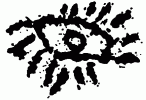The Riddle of Mount Sinai
Archaeological Discoveries at Har Karkom

What is the true story behind the biblical narration of Exodus?
Where is Mount Sinai?
This book presents archaeological evidence unearthed by Prof. Emmanuel Anati at Har Karkom, in the Negev desert, Israel. Geographically, Mount Karkom is situated approximately half way between Kadesh Barnea and Petra.
Har Karkom was a paramount cult centre and a sacred mountain beginning in the Palaeolithic Age, reaching its peak of religious activity in the third millennium BC, when it was a true "Mecca" for the desert people.
If the epic accounts described in the books of Exodus and Numbers rely on a historical background, and if indeed an exodus from Egypt took place with stops at Mount Sinai and at Kadesh-barnea, the chronological context may refer only to the BAC period, and more precisely to phase BAC IV (2350-2000 BC).
Har Karkom was a primary sacred mountain in that period, and the topography and archaeological evidence of its plateau appear to reflect the location and character of the biblical Mount Sinai.
TABLE OF CONTENTS
Emmanuel Anati Biography
From the book "The Riddle of Mount Sinai - Archaeological Discoveries at Har Karkom"
I. Mount Sinai Rediscovered
II. The Mountain of Sanctuaries
III. The Birth of a Hypothesis
IV. Topography and Exegesis
V. The Testimony of Archaeology
VI. The Human Landscape: Camping Sites and Other Structures from the Bronze Age
VII. Enigmatic Discoveries
VIII. Rock Art and the Cult of Stones
IX. People, Climate, and History
X. Conclusions
Acknowledgements
Bibliography
Mount Sinai Images Gallery
From the Survey report of Har Karkom map
Har Karkom Survey
HK Periods analysis
BK Periods analysis
HK Rock Art analysis
Glossary
The detailed corpus description of over 1200 archeological sites found at Har Karkom (HK) and Beer Karkom (BK) - By site number
HK Corpus 1-99
100-199
200-299
300-399
BK Corpus 100-399
400-499
500-599
600-699
700-799
800-899
Additional informations
Edizioni del Centro
CCSP General Informations
Links
...Sanctuaries and altars located on the mountain and at its foot, as well as numerous remains of campsites, tell the hitherto unknown story of a sacred mountain in the heart of the desert of Exodus, which seems to reflect with surprising precision the events and conditions described to us, albeit in miticised form, in the Old Testament.
But the archaeological discoveries go far beyond this; in opening up new areas to archaeological investigation the book provokes lively and enlightening discussion.
This web site, which features a rich iconography of over 200 illustrations, also helps to clarify a major question: to what extent may we consider the biblical narrative as a source of historical documentation.
| 


